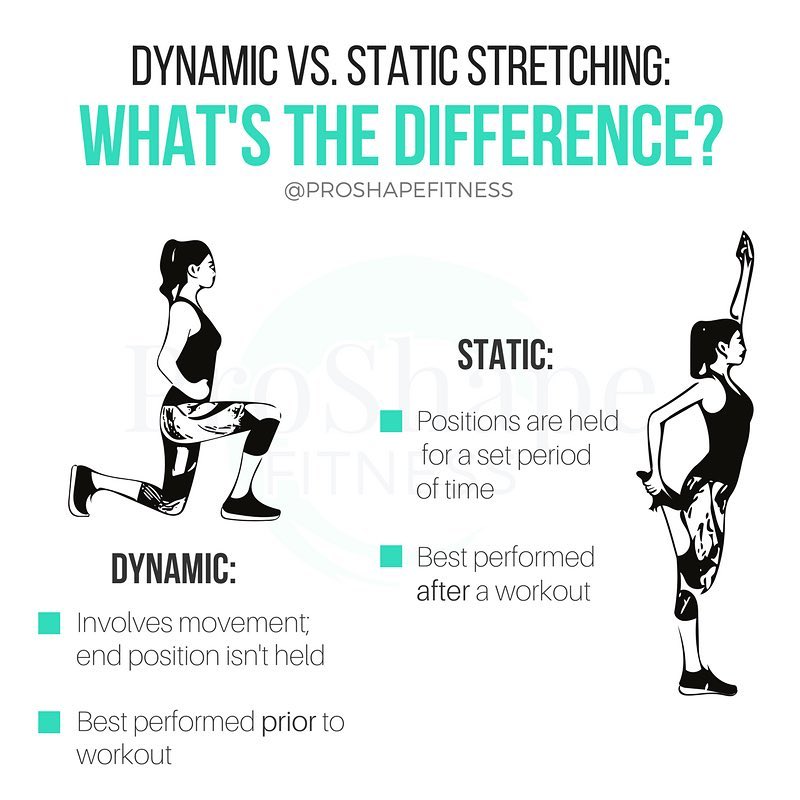
Have you always been told that stretching is good for performance, longevity, and reducing your risk of injury?
Stretching is something that has always been said to be good for us. But, the question is that with all of the current research surrounding stretching…
Is it actually beneficial to stretch?
Before we go down the rabbit hole of explaining all of the different stretching methods, busting myths, highlighting benefits, and negative impacts, we must first define what we are referring to and secondly what kind of stretching we are going to discuss.
Particularly, we will discuss static and dynamic stretching and the effects both have on performance and general well-being. So, whether you compete at a high level or you like to run a few km’s throughout the week, this blog will be of some benefit to you!
Static Stretching (SS)
This is the type of stretch where you elongate a muscle and hold it there for a period. Most people have done a calf stretch against a wall.
Dynamic Stretching (DS)
This stretch uses movement and momentum of the limb or trunk to move the muscle from one end of its range to the other end of the range, its best performed slowly and controlled.
An example of this stretch is reaching for your toes in a slow and controlled manner. This would be a DS of the hamstrings and gluteal muscles.

So again – should we static stretch?
Studies have concluded that the use of static stretching as a sole activity during a warm-up may harm performance, power, and strength. However, the keyword is ‘sole’ meaning if you are only doing 10 minutes of static stretching before an activity such as running it may increase your injury risk.
However, this is the fun part. That same paper also stated that short static stretching is recommended for activities that involve slower eccentric contractions, or sports that require greater ranges of movement such as gymnastics or karate.
So, what does this mean for static stretching?
If you are going to go for a run – spend the time you usually would doing static stretching doing a dynamic activity (which we will get to shortly) but if you are going to do something that requires your body to go into greater ranges of motion, short static stretching is going to be beneficial.
How about dynamic stretching?
Dynamic stretching is more appropriate in most cases. A recent study within PubMed stated that…
“A warm-up to minimize impairments and enhance performance should be composed of a submaximal intensity aerobic activity followed by large amplitude dynamic stretching and then completed with sport-specific dynamic activities.“
That sounds like something that would take a long time but if we break it down for a soccer player, for example, it may look something like this:
- 90-minute game of high intensity – spend between 25%-50% of game time warming up.
- Say you play 60 minutes of the time usually, that means between 15-30mins of warming up.
- If we break that down further into 30 minutes.
- Dynamic stretching (5-10mins).
- Short, and controlled static stretching (5-10mins).
- Drills/running where you are at 70-80% of your maximal intensity (5-10mins).
- Then drills involving cutting and change of direction.
What if you do not like stretching altogether?
If this is the case, what could your time be better invested in?
Firstly, strength training is a great place to start and Pilates is a good example of this. Pilates can be targeted to your strength and fitness goals and will decrease your risk of injury. In comparison to stretching, Pilates is a low risk of gaining a jury and it also offers other significant benefits.
Secondly, addressing “Training error” avoidance. This means decreasing load stress and increasing tissue resistance through your training. This requires carrying out movements and exercises that will not cause injury. For example, when you’re lifting weights use weights that are suited to your ability and lift in a safe and effective manner.

